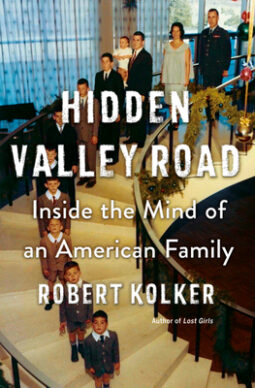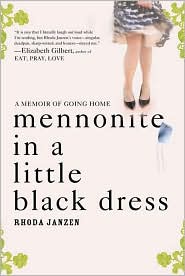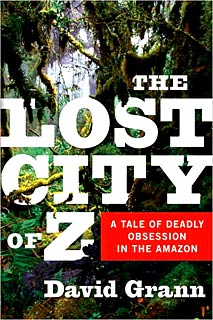This review contains affiliate links, which earn me a small commission when you click and purchase, at no extra cost to you. Thank you for supporting my small business and allowing me to continue providing you a reliable resource for clean book ratings.
Don and Mimi Galvin each yearned and strove for wealth and success, to be pillars of their community and have the perfect family. As Catholics, they went for quantity, too: The couple had 12 children between 1945 and 1965, first 10 boys and then, finally, two girls. They spent most of their life as a family in a split-level home on Hidden Valley Road in Colorado Springs. But the American dream they aspired to and tried so mightily to represent was shattered by mental illness. One after another up into the 1970s, six of the Galvin boys were diagnosed with schizophrenia.
Robert Kolker shares the story of this family haunted by mental illness, delving into the stories of parents Don and Mimi and tracing their life as Don sought recognition in his career and Mimi carried and gave birth to child after child, still seeking acceptance and admiration from her community. Their oldest son, Donald, was the first to show signs of schizophrenia, then the second, and the fourth, on to six in total. Two of the afflicted died in their 50s, ultimately victims of the medications that were meant to help them; one killed himself and an ex-girlfriend when he was only 22. Each stretched the capacity of the parents and the family to endure. Each spun through revolving doors between various hospitals and institutions and stays at home that put an incredible stress on all other members of the family.
As Kolker parcels out more and more of the tragic tale, he details the history of the science that evolved along the same timetable as the lives of the Galvins. He also shares the story of several researchers who were involved with the Galvins and who contributed to science in some way because of that interaction. As it so happens, the science of schizophrenia today owes a great deal to this family and will continue to do so in the future because samples of their DNA, including the schizophrenic sons and their non-ill siblings, their parents and even some other relatives, were collected at a few points in time and have been studied and are still available for researchers in the future. Science had in the Galvins a rare opportunity: a family with an unusually large sample size where half the children had schizophrenia.
Their story began in the 1940s, and it continues today, with three afflicted sons still living and dealing with their disorder. Even 75 years on, in some ways, the study of schizophrenia hasn’t yielded as many breakthroughs or changes as one would hope. As Kolker says, “in some respects, little has changed. The market for new schizophrenia drugs remains sluggish” and “the same nature-nurture squabbles over the source of the illness have continued, if at a more granular level.”
But there are some subtler changes; “anti-psychiatry” has emerged to normalize hallucinations and other things associated with schizophrenia, along the lines of the concept of embracing neuro-diversity. “There is a robust anti-medication movement now,” as well, some studies showing many patients have “favorable long-term outcomes without prescription drugs.”
“If there is a significant change,” Kolker concludes, “it’s that more people are acknowledging the elusive quality of schizophrenia diagnoses, aware that there is no one-size-fits-all definition. Each passing year brings more evidence that psychosis exists on a spectrum, with new genetic studies showing overlap between schizophrenia and bipolar disorder, and bipolar disorder and autism.”
This book is a story of real people who suffered tremendously, and it is heartbreaking to read just about the individuals in this family; it’s also a reminder that there are so many more stories like this, just in smaller families, and each is just as tragic. At the same time, it holds hope because of how some of the surviving members have been able to heal or begin to heal; it offers hope because these same people were able to contribute to science so that others may suffer less. It’s educational, it’s a succinct history of the study of schizophrenia and an overview of the current understanding and trends. It’s an excellent book overall, and one that helped me learn and touched me deeply. Whether or not your family has been touched by this kind of serious mental illness, I highly recommend it.
Rated: High, though it’s on the border of being moderate. Profanity includes six instances of strong language, plus 10 or so instances of mild and moderate language. Sexual content refers to several children and teens being molested and raped, most by family members. Details are kept minimal, but later in the book, it becomes a topic that several members of the Galvin family discuss with the author and each other. There are also some references to one or two of the mentally ill men stripping naked and being in public and one or two about them pleasuring themselves around others. Violence is moderate in detail but is somewhat frequent; these brothers had serious physical fights with each other.
Click here to purchase your copy of Hidden Valley Road on Amazon.




